101 Imaginary Nights At The Movies
PROLOGUE
The other evening I watched a film on home video that was first released in theaters 31 years before I was born and which I was then watching 40 years later. From my first viewing of the film in question around the age of 18 – the same age as the youngest of four brothers who is killed in the first reel – I have seen this film approximately 15 times over a 22 year period, including once projected in a university theater for a film history class. Adding an extra layer of time displacement to all those multiple viewings, the action of the film takes place in a romanticized though mostly authentic historical setting; a fictionalized though mainly truthful rendering of actual personalities and events. That exteriors shot in Monument Valley, Utah double for their historical location of Tombstone, Arizona and its environs, and that period costumes, settings, interiors, and vehicles are meant to evoke a bygone world precisely 64 years before its filming, John Ford’s My Darling Clementine (1946) is nonetheless a Western film that continues to resonate with audiences wherever and whenever it is viewed.
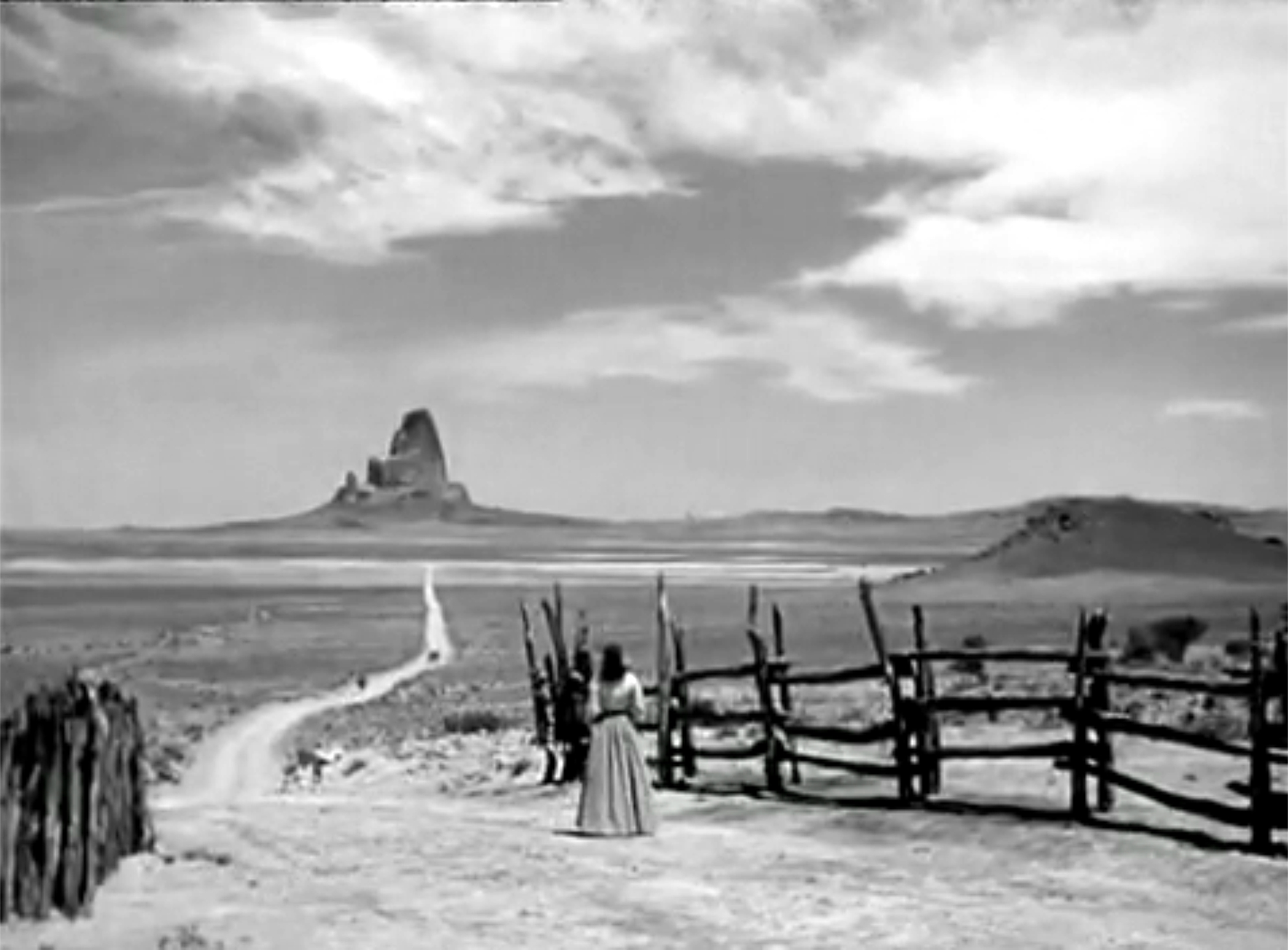
MY DARLING CLEMENTINE (1946)
Thus the magical quality of film: the triumphant convergence, conflation, and collapse of space, distance, and time. Following the viewing, however, this cinemaddicted viewer fell into a fitful sleep, visualizing in precisely the same line of sight as watching a movie the black-and-white coda to John Ford’s own filmmaking vision. Sitting in a grand old theater, this dreamer witnessed Ford’s civilizing agent of the Wild West, Wyatt Earp, gradually drifting further westward over 35 years of subsequent setbacks and disappointments, eventually encountering an assistant propman on the set of a Hollywood Western. That the young technician would become John Ford, and that the elderly former gunman was now reduced to spinning fanciful tales of exploits long past, the creative possibilities of deep film viewing unfolded to dreaming eyes with the clarity and precision of light projected through thin strips of acetate celluloid. With the referenced qualities above of space, distance, and time, our dreamer felt he could be now justified in adding yet another dimension to that trifecta of moviewatching: imagination.
As the dreamer was of course myself one hopes I’d be justified in switching to the first person mid-sentence; where by removing the distance of narration between you, the reader, and me, the reporter, I can more directly address both the inspiration and impetus for this potential series of articles and your possible confusion(s) about and objection(s) to them. Per the title above, and its more suggestive subtitle directly beneath, I will be attempting over the next 101 articles, of approximately 1000 words each, to create a repository of imaginary film viewing. Beginning in the last decade of the nineteenth century, I will progress through the earliest experimentation with motion photography in the Gay Nineties; though the days of the earliest tent show exhibitions and Nickelodeons; through the emergence of silent film as a commercial art form; and continuing through the development of film sound, color photography, and process effects; towards, approximately, the centennial anniversary of the medium. (Or, per the extra numerical value of the series, a century plus one.)
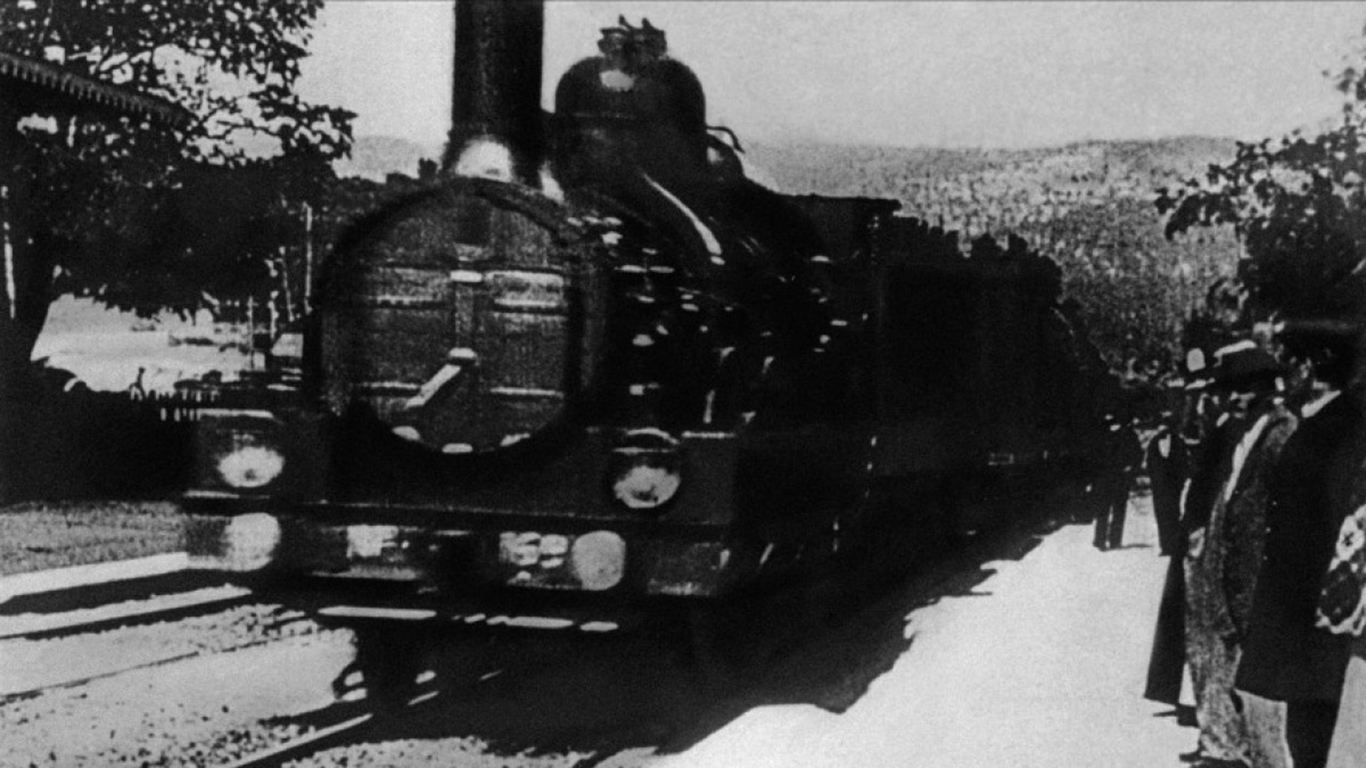
In short, I will be making up 101 films that might have been made but never actually were, and commenting upon these black-and-white visions and Technicolor dreams with an imaginative and critical eye geared towards and fixed upon the historical development of the medium. The reasons behind this series are many, encompassing personal preferences along with general ambitiousness, but mostly it’s because I want to see if I can successfully follow through on and do justice to the idea.
Should it be allowed? Will I allow myself? While impossible to tell at this point, I can at least offer a few remarks on why I would possibly want to embark on such an unwieldy sounding project. The first and most pressing is that I love film history but am not a scholar. Lacking academic credentials, a pedantic tone, or the ability to footnote, I sadly would not be allowed within the vaunted gates of a film preservation archive, in which over a century of forgotten movies, many possibly ripe for rediscovery, are locked away, but I have often imagined the treasures that might lie within. My century and an evening’s worth of made-up movies, then, will allow me in a small way to scratch that viewing itch.
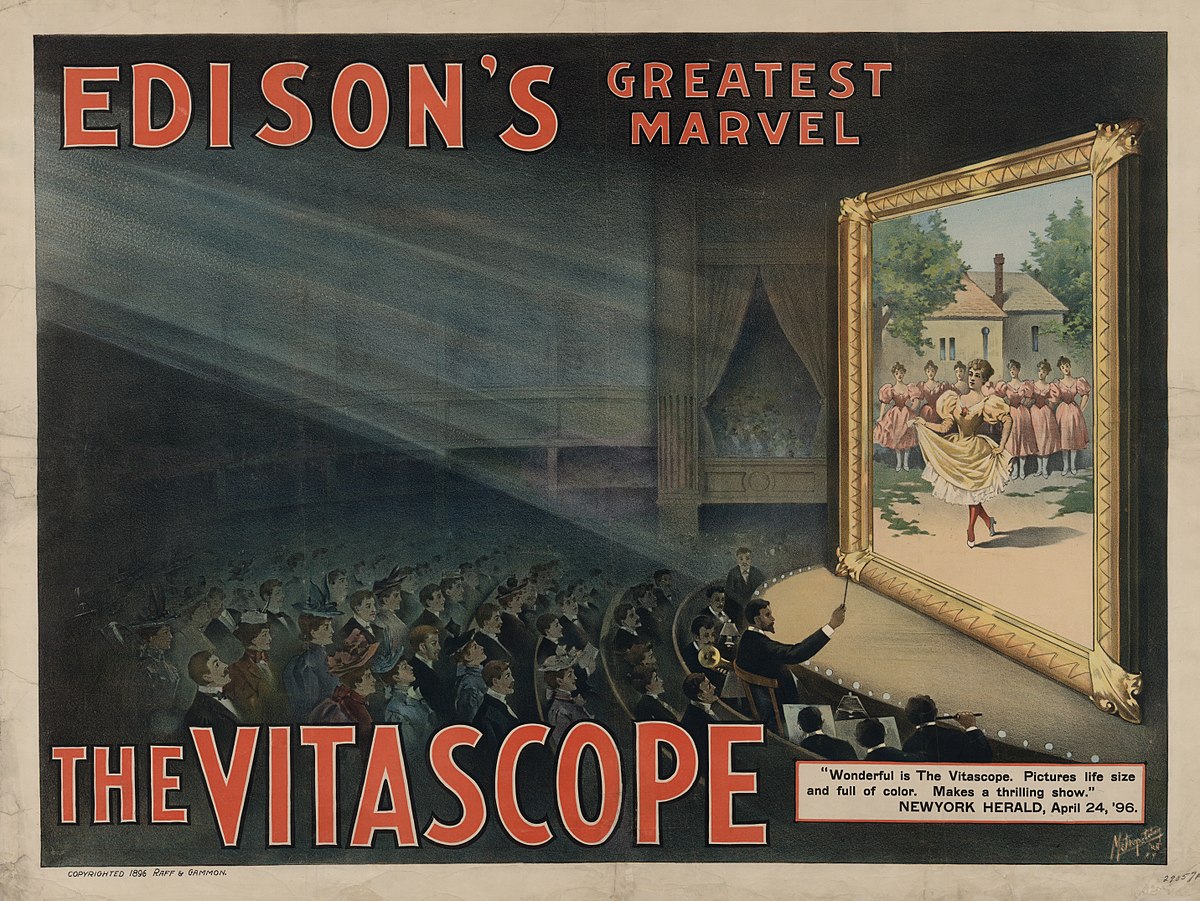
The second requires its own paragraph, if not the justification of its length. Related to the somewhat tongue-in-cheek appraisal of film scholarship above, my private feeling about the sometimes brittle and too opinionated character of general criticism often leaves me curiously deflated in reading it, leading me to outright reject the “authorial” and indeed authoritative manner of its presentation. Ideally, I think a film critic should at least entertain the notion that he or she can be wrong and that his or her judgments can change over time; if possible, even, a truly great critic would potentially be able to air his or her views in such a manner as to suggest the inherent complexity of virtually any viewing experience. Humility in this regard is essential to a critical piece, and, taking the notion further, my not so humble ambition with this series would be to virtually withdraw the critic from the piece – including the over-evaluative, prove-me-wrong tone – and in effect replace the aggressive, accusative “I” with a reflective and far-seeing “eye”. The act of viewing can also be a creative act, and far from regurgitating tenuous opinions better articulated elsewhere, my imaginary cinema could potentially allow honest reflection on the complexity of film viewing by paradoxical virtue of the film in question not actually existing.
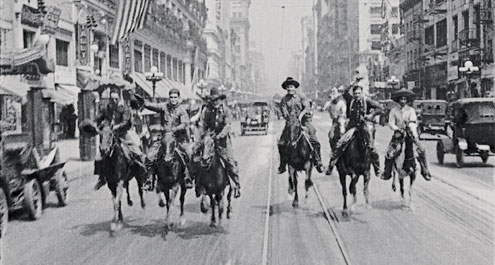
from John Ford’s BUCKING BROADWAY (1917)
Third and finally, and immediately contradicting the essential quality of a truly great critic, I simply wish to be read. As attention-getting a gimmick as I could literally dream up, my going theory is that a potential and at this point highly theoretical reader would be more likely to pass over yet another long scholarly essay on John Ford’s 1946 My Darling Clementine than give their time to a detailed critical piece on, say, John Ford’s 1947 Wyatt Earp in Hollywood. (Or possibly Conscience of an Old Western Storyteller; haven’t quite decided yet.) And for those who don’t normally read film criticism, or who have little interest in film history, Cinema of Forgotten Dreams could prove a suitably unusual and imaginatively suggestive entrance point to the fascinating study of film. As a subject, not to mention a means of expression, film viewing, making, and study are all part of the same dream; it’s my hope that the following 101 entirely imaginary examples will prove a fascinating dimensional counterpart to the critical appreciation, real history, and artistic appreciation of collective dreaming.
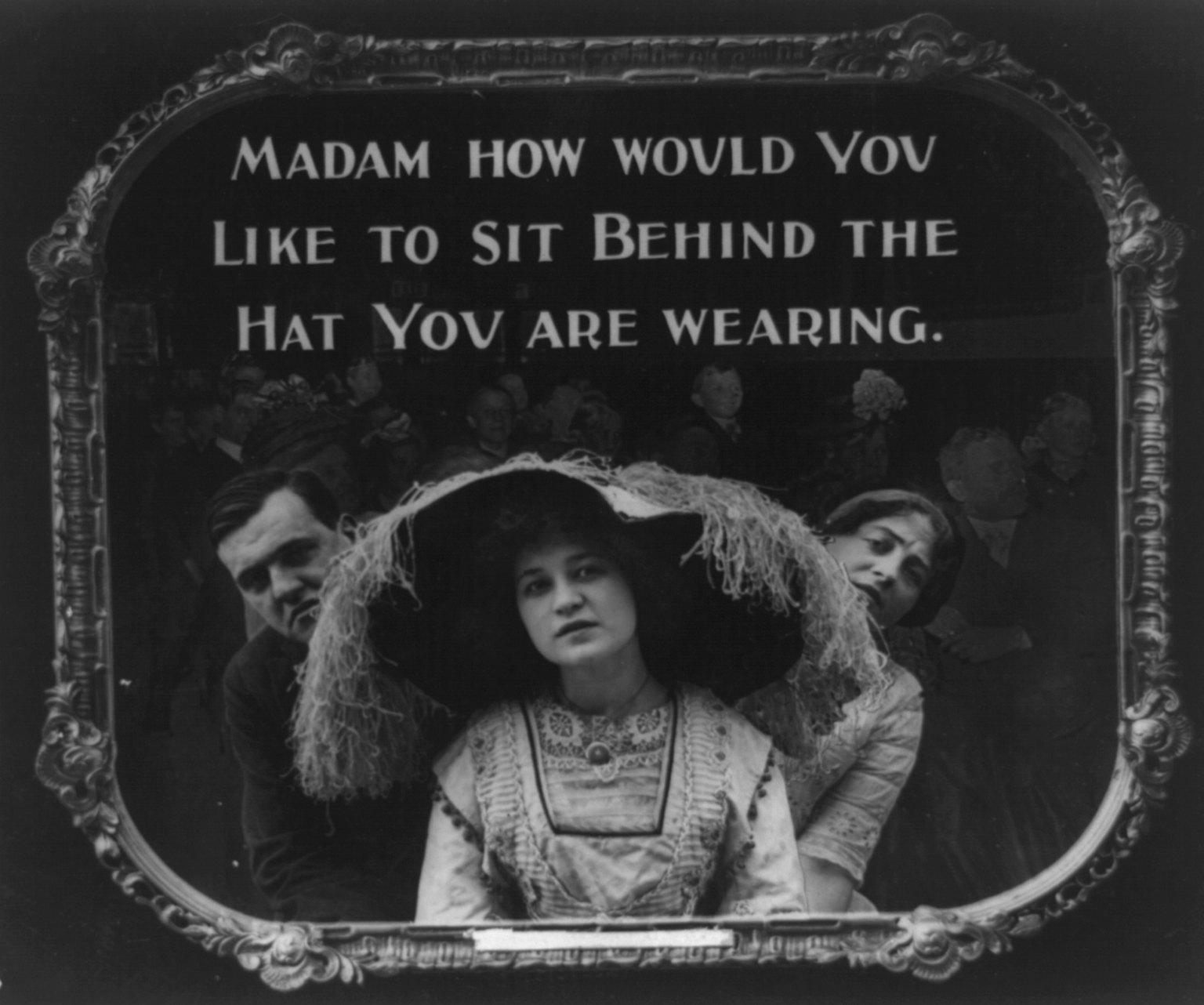
Cinema of Forgotten Dreams #1
DANCE OF LIGHT (188?, Edison Company)
The dubious and at times contradictory origin of films, movies, motion-picture photography – and all the synonyms for the medium in between – may be traced to the mysterious and indeed chimerical existence of this approximately 25 feet of silver nitrate stock. Struck from a successive series of frame-photographs, which were submitted to the US Patent Office in December 1891, the film did not exist in its present form until an unknown technician at the Edison Company unraveled and real-time photographed a corresponding collection of 17 wax-paper cylinders some time in the early 1910’s. The laborious technical feat – undertaken, apparently, as an unrelated exercise in mechanical reproduction – resulted in the unintended preservation of what may have been the very first motion-photography experiments, but simultaneously obscured how the film came to be in light of either its means of manufacture or its intended method of exhibition. The single frame-photographs presumed lost by the US Patent Office, the fragile wax-paper cylinders shattered during its filming, and the temperature-preserved silver nitrate stock deteriorated past the point of further restoration, the Edison Company’s Dance of Light now persists in every form up to and including compressed digital files, but the long-contested film’s conflicting and confusing source materials have virtually vanished from any solid or physical state.
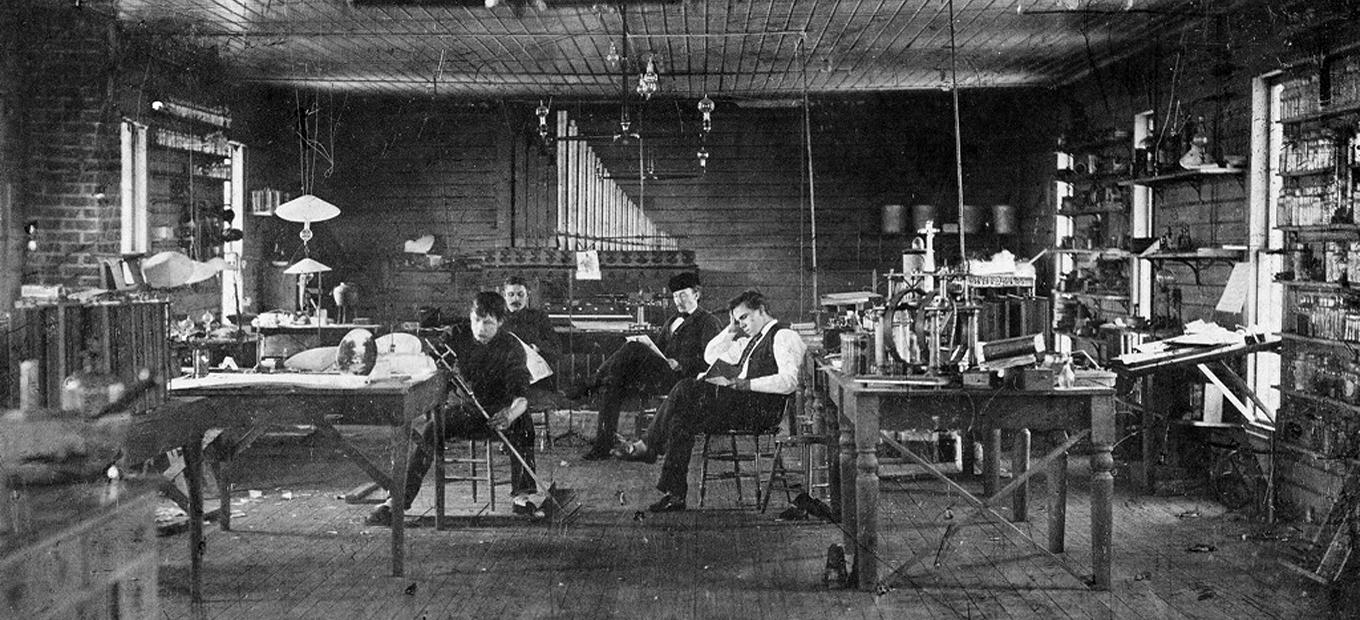
collected wizardry of Menlo Park, NJ; dreaming up future mechanical marvels
Projected at a film speed rate of 16 frames per second, most existing 35mm prints run a little less than 20 seconds, and derive from cellulose safety stock taken from a 1950s transfer of the original silver nitrate that – legend has it – spontaneously combusted and partially burned during the duplication process. As such, the subsequent generation of duplicates which in turn derive from the nearly destroyed copy of the original piece of film – itself of uncertain origin or purpose – tend to cast further doubt on the present authenticity of these oft-projected images. Frequently billed as “the first motion picture” at theaters, museums, and archive centers, even the title Dance of Light came along some time after its filming – or, more accurately, “recording” – and many prints merely commence without either the Edison patent card or the Gothic script announcing its content. Whether one is to take the incredibly powerful though highly ambiguous footage as an experimental pictorial puzzle, an advertisement for the Edison company, or even as a simple photographic mistake is up to the individual viewer, but Dance of Light continues to spark appreciative conjecture precisely because of its inexplicable origin, unknown means of production, and obscure viewing effect.
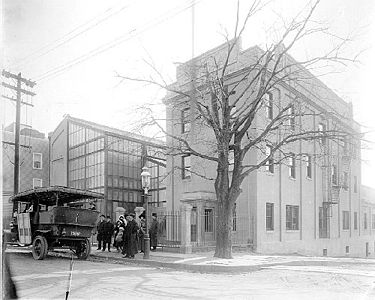
Edison building on Decatur Avenue, the Bronx, NY
A series of faltering images introduce Edison’s Bronx, New York laboratory on Decatur Avenue. The glass dome stretching over the top-story offices allows the glare of midday – visible from the streaming position of the sky’s own sourcelight – to bathe the interior with a reflective gleam that dangerously approaches but does not exceed effective exposure levels. Coils, tubes, bulbs, and twig-like configurations of wires – weaving over, under, and through the electrical instruments – stretch across the obsidian sheen of a room-width counter. And by the seeming turn of a switch, the second half of the film reverses the sequence of the first, with a low glare now emanating from the surface of the long black table continuing upwards through the coils, tubes, bulbs, and wires of the electrical instruments; gradually encountering the natural light streaming down through the glass dome. At this point, the collision of light sources overwhelms the exposure level of the camera as the image quickly flashes and rapidly dissolves into a dark, empty frame. Finally, in the split-second between light and dark – or precisely 8 still frames – the Edison laboratory appears to shimmer and glow of its own accord, and the 126-year-old image seems to effectively “dance” with the visual consistency of rhythm.
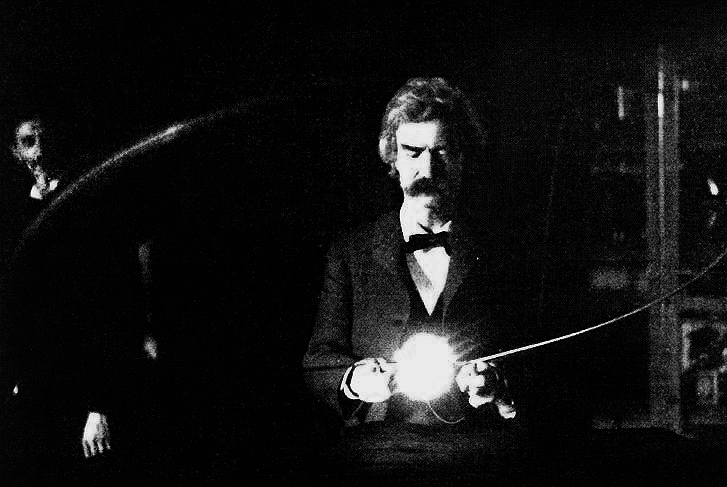
author Mark Twain in electrical laboratory of onetime Edison employee (later competitor) Nikola Tesla; 1894
“Flicker” is yet another early term for motion pictures gaining currency around the time Dance of Light re-emerged from the Edison laboratories, and actually better applies to the looped continuum of time and space than the more conventional term ‘movie’ implies. Lacking story, personalities, or even movement, the single shot – anchored at a fixed distance from its photographic view – challenges the viewer to peruse the image’s content for its own coded meaning as it unfolds in real time. And despite the coiling length of the copper-coated equipment, or the long row of visually baffling electrical apparatus, the eye is continually drawn to the source of light within the image, whose mid-point switch between the open skies above to the enclosed dome of the laboratory below is as evocative of the act of film viewing as it is also finally unclear. Like the motion-photographic printed across 384 individual frames, chemically treated to visually register their own continuum between light and dark, the 8 key frames that “flicker” across screens are, in fact, bereft of visual content. Effectively blank, then, the eye creates that “flicker”, or visual meaning, from – in turn – an empty frame, a white screen, and a projected stream of light.
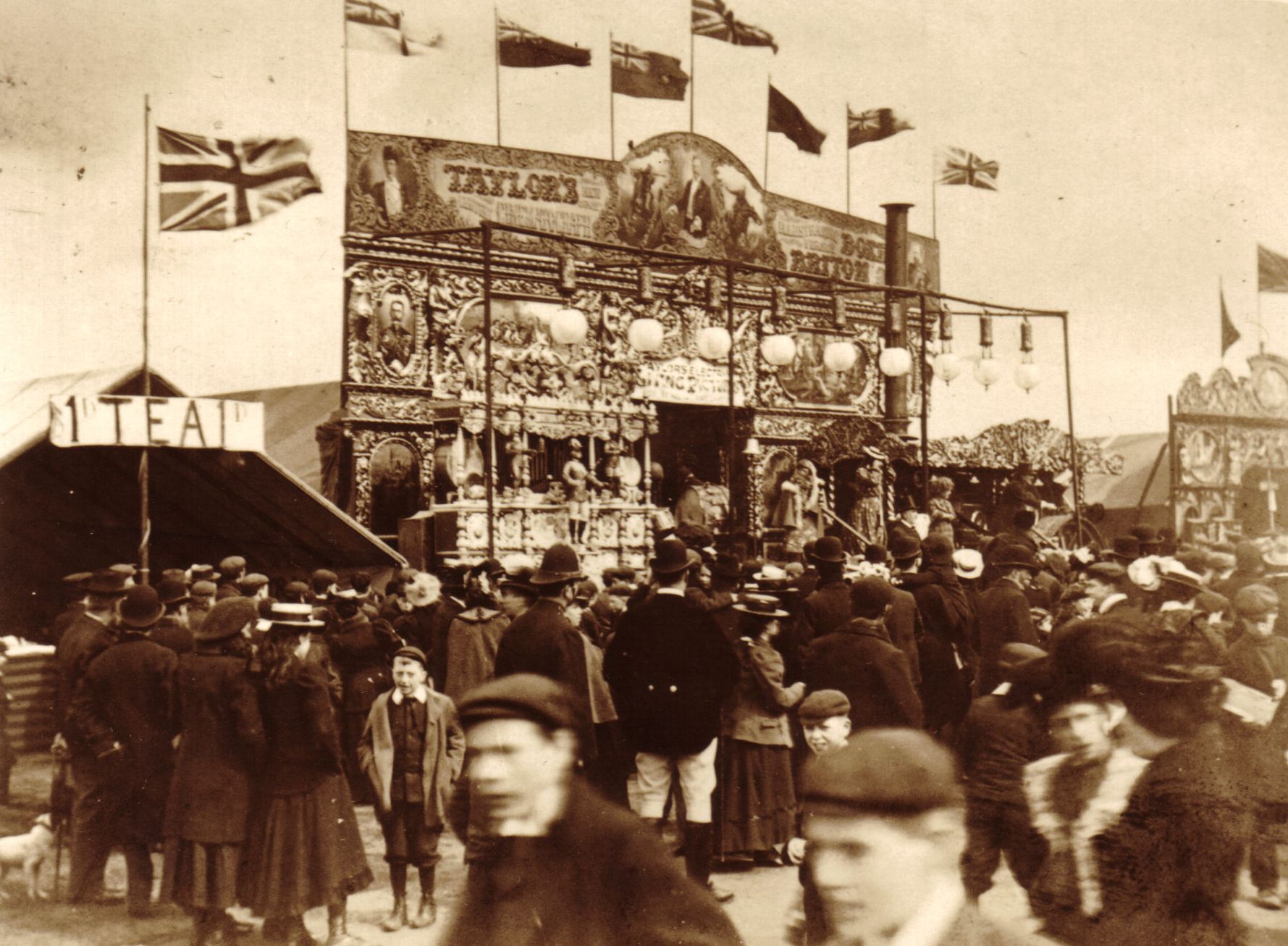
early twentieth century tent fair movie exhibition
126 years later, audiences continue to gather in the shadows and to submit themselves to the essential mystery at the heart of film viewing. Staring upwards at a blank screen, the flickering images click and whirl with the appearance of physical-motion reality, but in fact, isolating the act of viewing across multiple split seconds, the audience sits precisely half that viewing time in total darkness. Our own Dance of Light becomes complicit with our eyes’ striving towards the projected image, where imagination steps in and fills the gap between reality and fantasy, being and non-being, light and darkness.
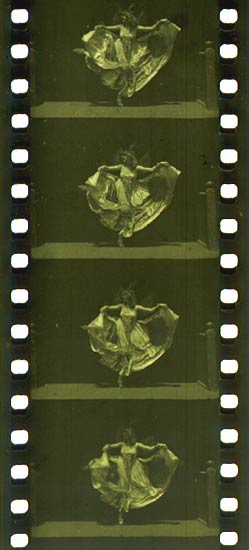
35mm filmstrip of Edison Co.’s BUTTERFLY DANCE (1894)
The Genesis moment of “Let there be light” captured in an Edison laboratory on an afternoon two centuries ago, as complicated and conflicting a moment of origin as an oral tradition passed through millennia of written, recorded, and translated transmission, persists to this day; the reflective glow of its imagery continuing to radiate with the power of that mystery. Projecting meaning, life, and illumination where there is demonstrably none, the 8 frames of darkness are somehow suffused with an overwhelming though ultimately unexplained light by very means of that mechanical projection. We cannot look away, and the flickering images continue to impress themselves upon our minds’ eye with the persistent force of dreaming.

